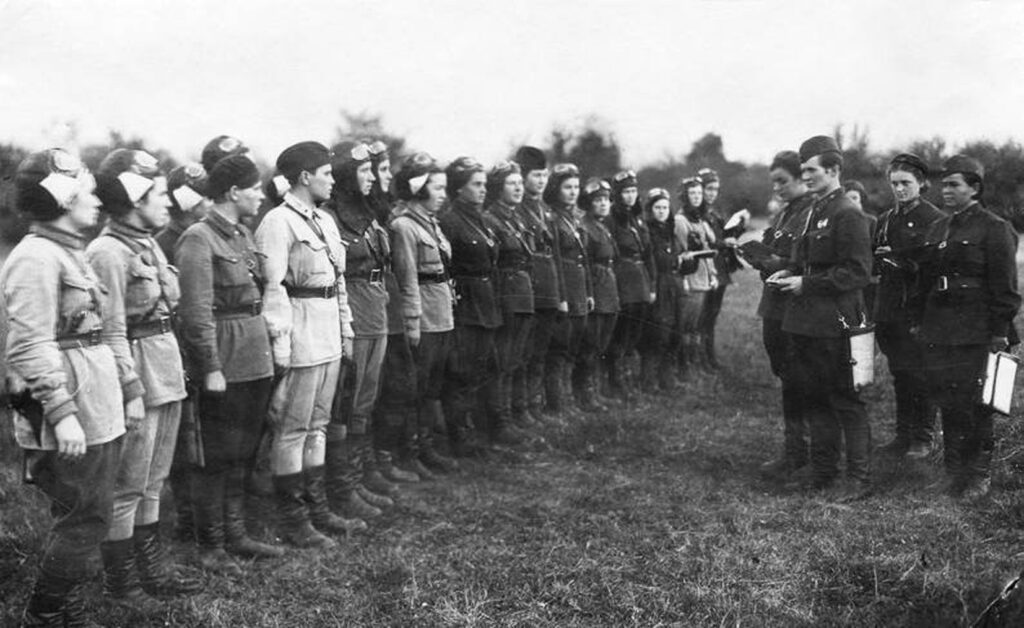
What was one the most horrifying sounds a German soldier on the Russian front could hear in the dead of night – a sound that would turn his heart to jelly? The soft “whooshing” of the wind off the struts of a “Night Witch” jerry-rigged biplane bomber; described as the eerie sound of a witch’s broom as it quietly glided in to drop its payload of bombs.
Who were these Night Witches? They were the all-women pilots of Russia’s 588th Night Bomber Aviation Regiment. In World War II, American women such as the WASPs supported the war by ferrying and testing planes. But the Night Witches were the first women military pilots in the 20th century to directly engage an enemy in combat. The pilots weren’t the only women in the 588th. All the members of the 588th were women, including the navigators, ground crews, and support staff.
The Night Witches were organized by Major Marina Raskova, who was essentially Russia’s equivalent to our Amelia Earhart. Women pilots, though, weren’t unusual in the Soviet Union. Flying was popular in the 1930s and thousands of women belonged to flying clubs. But when Germany invaded Russia in 1941, Russian women weren’t allowed in the Soviet Air Force even though they were allowed on the front lines in the army. Raskova received a slew of letters from women protesting the prohibition. After all, if women were allowed to fight alongside men on the ground, why not in the air too?
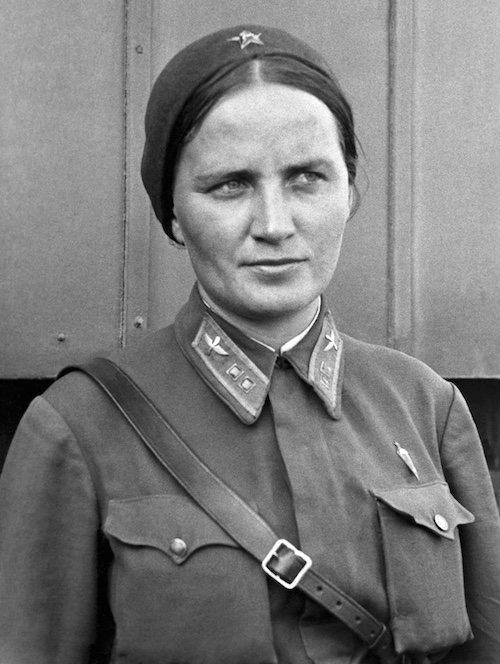
Joseph Stalin was one of Raskova’s admirers. She showed him the letters and convinced him to have the Soviet Air Force accept women as combat pilots. Women rushed to enlist. Some were integrated into regiments to fight alongside male pilots.
Stalin also authorized the creation of three all-women fighting groups:
- 586th Fighter Aviation Regiment
- 587th Bomber Aviation Regiment
- 588th Night Bomber Aviation Regiment
Thousands of women enlisted. Around 400 were accepted for each regiment. Most were university students in their late teens to mid-twenties. They spent an intensive year training, learning not just how to fly, but to navigate and maintain the aircraft too – training that normally took several years to complete.
Because the Soviet Air Force had no females up until then, the women were given old men’s uniforms. The clothes were often too large and baggy. And the boots were sometimes so oversize that the women tore up their bedding and stuffed it in their boots to make them fit better. Some also cut their hair short to appear like men, but painted flowers on their planes and used navigation pencils to color their lips to add a feminine touch to the war. Officially, the women were treated just like their male counterparts – except they were given more soap.
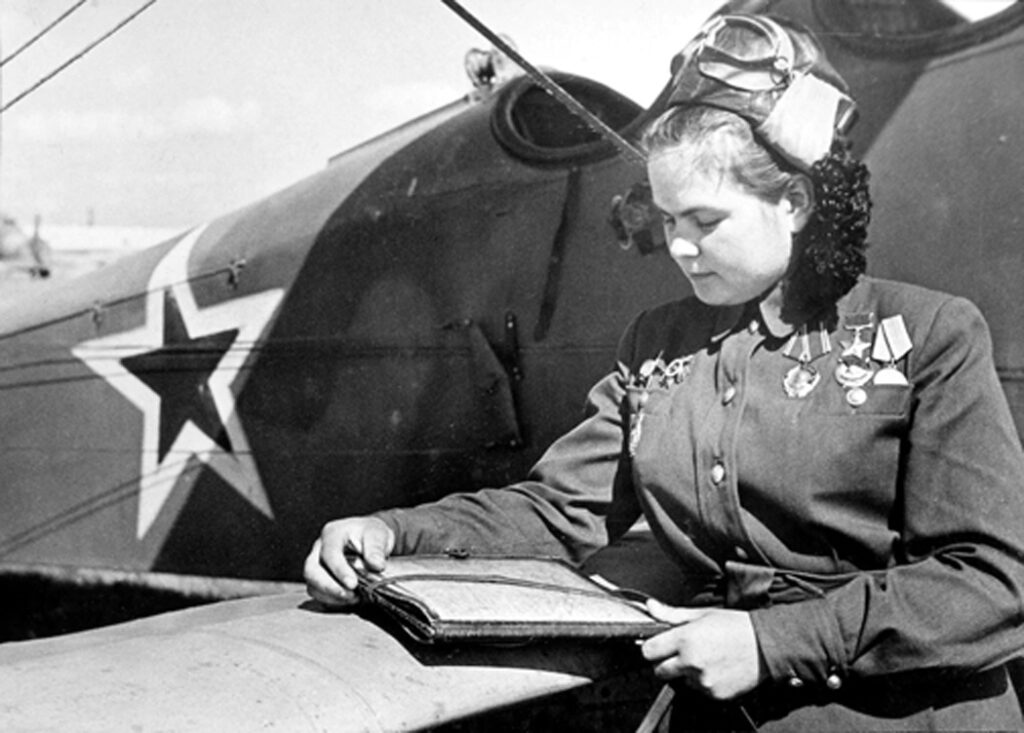
After the training, the pilots deemed most qualified were assigned to the 586th Fighter Aviation Regiment; the second most qualified to 587th Bomber Aviation Regiment; and the least qualified to the 588th Night Bomber Aviation Regiment. But in a unique twist of fate, the “least qualified” became the most feared and famous.
Unfortunately, there weren’t enough modern planes to go around. So the 588th was given out-of-date Polikarpov Po-2 biplanes that were primarily used as crop dusters and training planes. The pilot sat up front and the navigator, who also was the bombardier, sat in the rear. The plane was like a death trap waiting to spring. Some Night Witches likened the rickety Po-2 to “a coffin with wings” because the plane was made of plywood with canvas stretched over it. If a tracer bullet struck the plane, it could easily burst into flames. The plane’s top speed was 90 miles per hour, and it could carry only two bombs, one under each wing. The weight of the bombs and crew forced the plane to travel low, which allowed it to be spotted easily by the enemy. Because of those handicaps, the planes could only fly at night, under the cover of darkness.
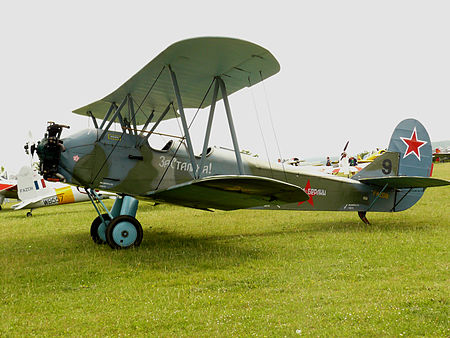
The Night Witches carried no parachutes because they flew so close to the ground and parachutes also added extra weight. They also had no modern instruments and had to rely on maps, compasses, stopwatches, pencils, and flashlights to find their way to their objectives. Because the cockpits were open, the pilot and navigator were exposed to the elements, including rain and freezing wind. In extremely cold weather, they could get frost bite. If they put their bare hand on the fuselage, the flesh might come off when they pulled their hand away. The Night Witches also carried pistols to use if they crashed, but would save the last bullet for themselves so they wouldn’t be captured alive.
The Po-2 did have some advantages, however. Its light weight made it more maneuverable than the German planes, which made them harder to shoot down. Being made of wood and canvas, the plane didn’t show up on German radars or infrared indicators. And the top speed of the Po-2 was slower than the stall speed of German fighter planes, making it hard to engage from the air. The biplanes also could take off and land almost anywhere. That quality was essential because the 588th had to operate very close to enemy lines, constantly moving operations during the day so the women could fight at night. Because of their combat schedule, the women slept and trained during the day and flew during the night. Understandably, they didn’t get a lot of sleep…but neither did the German units nearby that had to be prepared for nighttime air raids. The psychological effect of the Night Witch raids took a toll on the German troops.
Because their planes could carry only two bombs, the Night Witches flew multiple bombing sorties –from eight to eighteen – in a single night. They’d drop two bombs, return to their temporary base, refuel and take on two more bombs, and then fly off on another sortie. Each sortie lasted between 30 to 50 minutes. Sometimes the Night Witches would return with planes riddled with bullet holes. Nadezhda Popova, one of the most famous Night Witches, once returned from a sortie with 42 bullet holes in her plane as well as in her helmet and map. Another pilot lost the bottom of her plane to enemy fire but kept on flying.
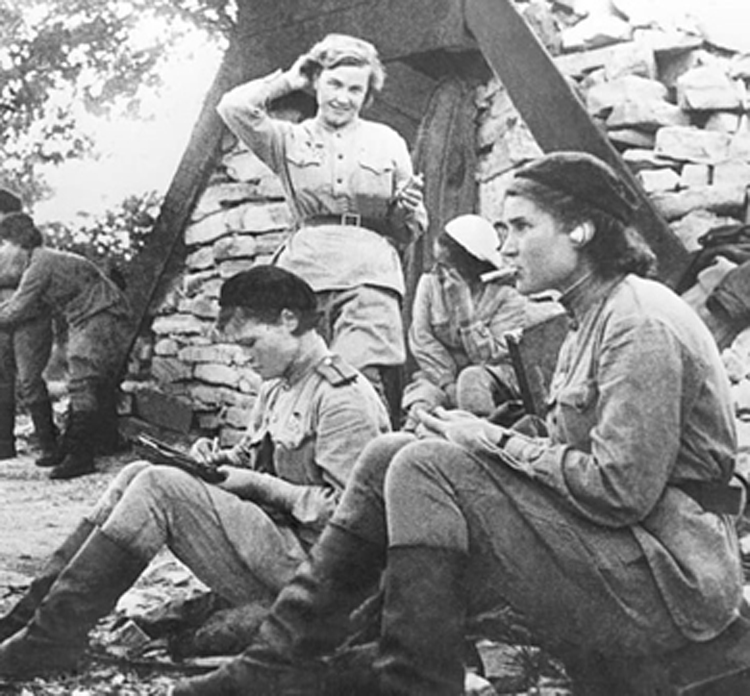
Each sortie was extremely dangerous because the Germans surrounded what they thought would be likely targets with concentric circles of searchlight and flack guns that the Night Witches would have to fly through to reach their targets. But the Night Witches devised a strategy to foil the Germans. They would fly in groups of three. When they neared their target, two planes would fly through the circles and then veer off in different directions, which caused the searchlights and flack guns to target them. Then the pilot in the third plane would fly toward the objective. When the navigator tapped her on the shoulder, she would kill the engine and drift in near-silently toward the target, with only the faint “whooshing” sound of wind through the struts signaling the impending attack. Then the navigator would drop her bombs and the pilot, hopefully, would restart the engine and fly off. The three planes would switch places until they’d dropped all their bombs and then return to base for more.
The ground crew – Night Witches all – would repair any damages, refuel the planes, and load more bombs for the next sortie.
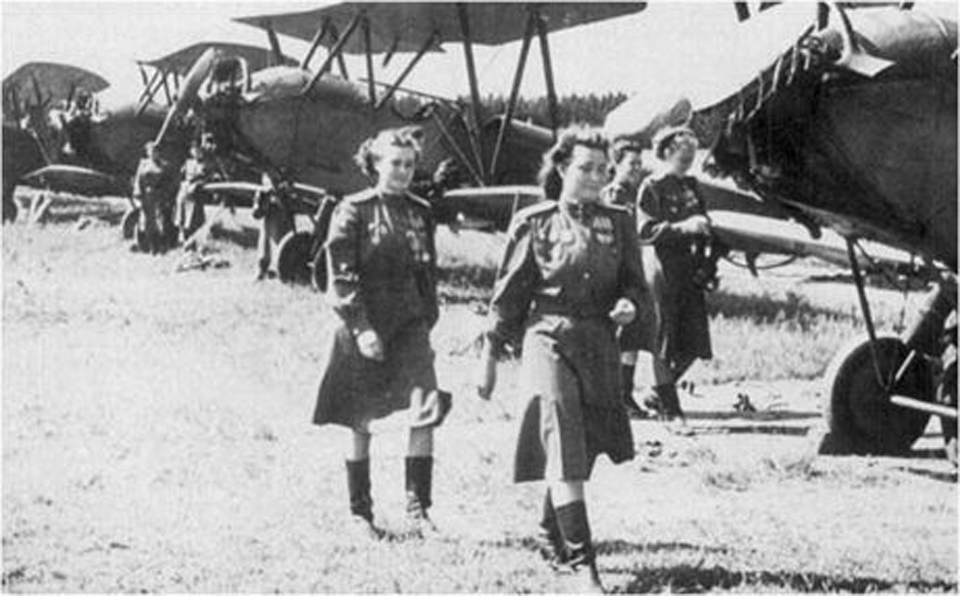
The Night Witches accomplished their mission, which was to disrupt the Germans’ sleep (and therefore, morale) while bombing important targets. The women were referred to by the Germans as “Nachthexen” – Night Witches –meant as a derogatory term, but one which the women of the 588th adopted with pride, and for good reason. From June 1942 to October 1945, the unit flew approximately 23,672 combat sorties, collectively logged 28,676 flight hours, and dropped over 3,000 tons of bombs and 26,000 incendiary shells. They damaged or destroyed 17 river crossings, 9 railways, 2 railway stations, 26 warehouses, 12 fuel depots, 176 armored cars, 86 prepared firing positions, and 11 searchlights. Plus, they also made 155 supply drops of food and ammunition to Soviet forces.
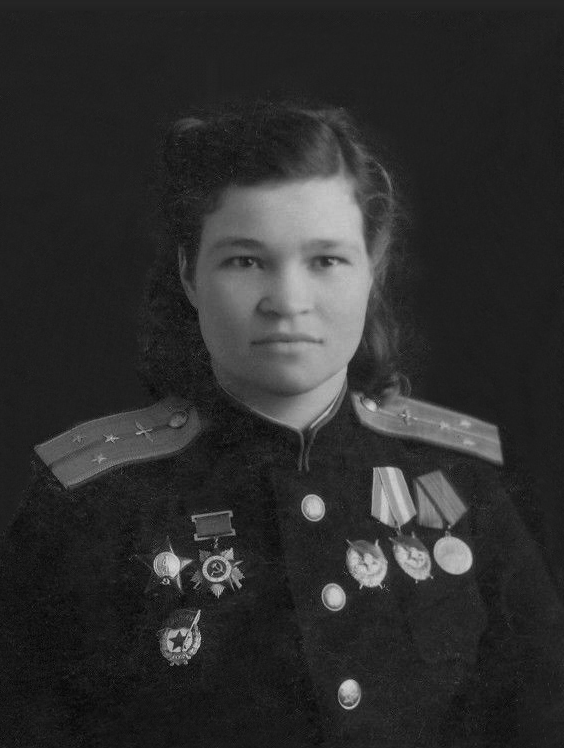
But life was difficult for the Night Witches for another reason: they often faced discrimination from male pilots. The men viewed them as inferior and showed them little respect. The Night Witches weren’t given similar equipment such as radios and machine guns to protect themselves from German fighter planes. The discrimination strengthened their determination to succeed. Eventually, because of their high performance, many men did grow to respect them. But the women worked hard to get it.
Thirty-two Night Witches, including Colonel Raskova, died in service. Eighty-nine Soviet women won their country’s highest honor, the Hero of the Soviet Union award in WWII; twenty-two of those were Night Witches. After the war, the Soviet Union held a massive victory parade, but the Night Witches couldn’t participate in it – because their planes flew to too slow.
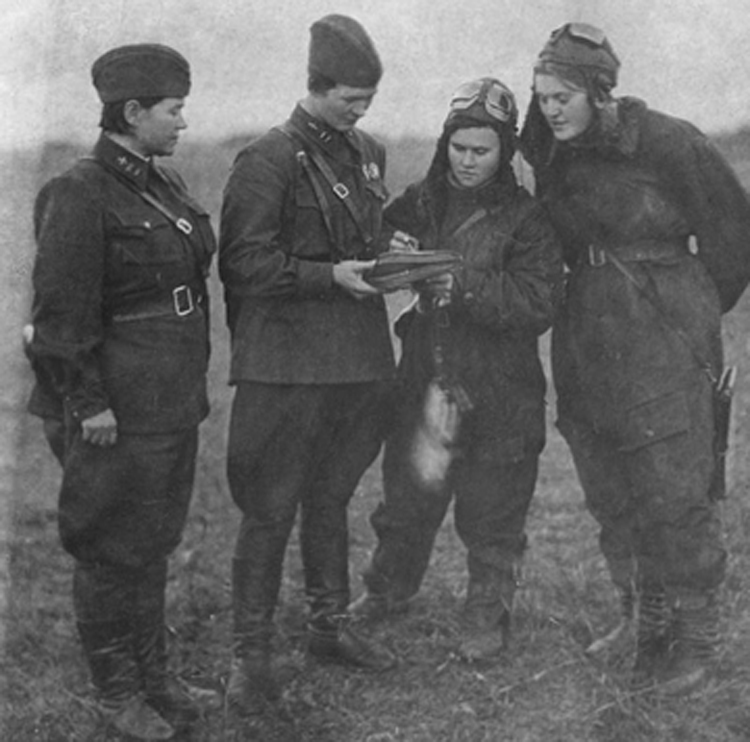
After World War II, Soviet women were once again largely kept from combat roles and eventually the Night Witches’ achievements faded from memory until few people knew about them. But in February 2019, author Kate Quinn helped revive interest in the Night Witches when she published her novel The Huntress, in which one of the main characters, Nina Markova, becomes a Night Witch and fights the Germans.
Let’s hope these intrepid women remain in public memory for a long, long time!
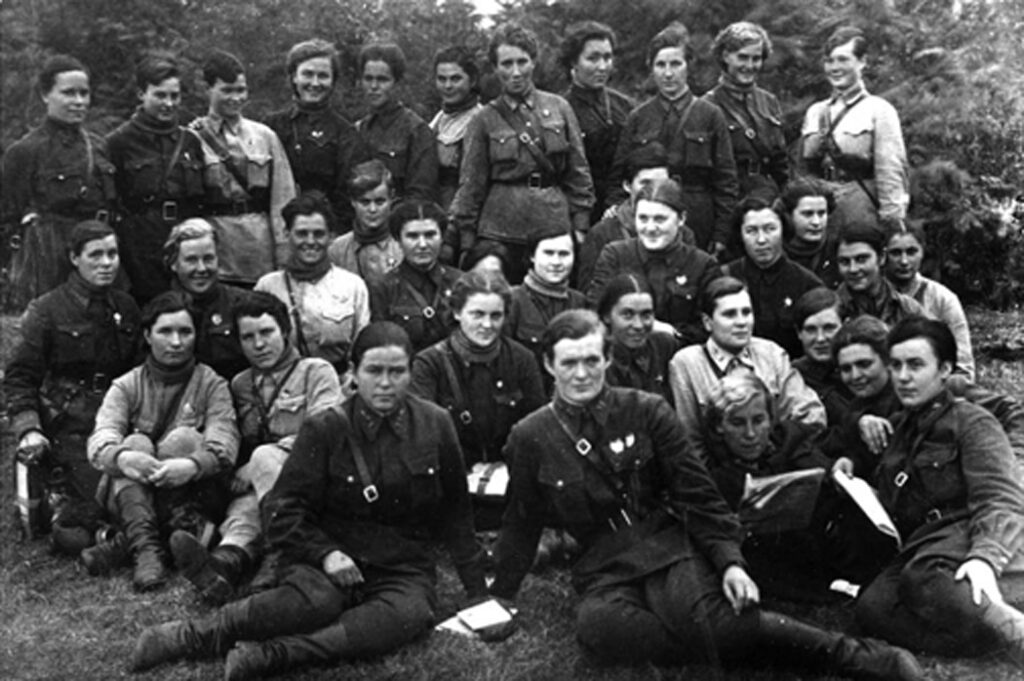
This post is Part 1 in a series about Soviet women pilots in WWII. Upcoming posts will discuss the aforementioned 586th Fighter Aviation Regiment and the 587th Bomber Aviation Regiment.

